Crimson Shadows 50% off, if you buy four other books
Tuesday, June 30, 2009
posted by Leo Grin
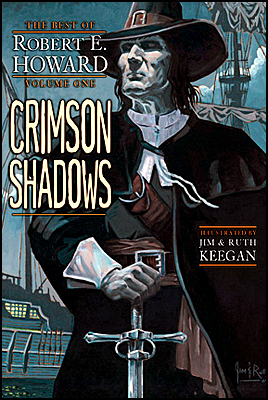
That’s the deal going on at Subterranean Press through July 3. If you’re interested, check it out (hat tip: Jack Jones).


That’s the deal going on at Subterranean Press through July 3. If you’re interested, check it out (hat tip: Jack Jones).
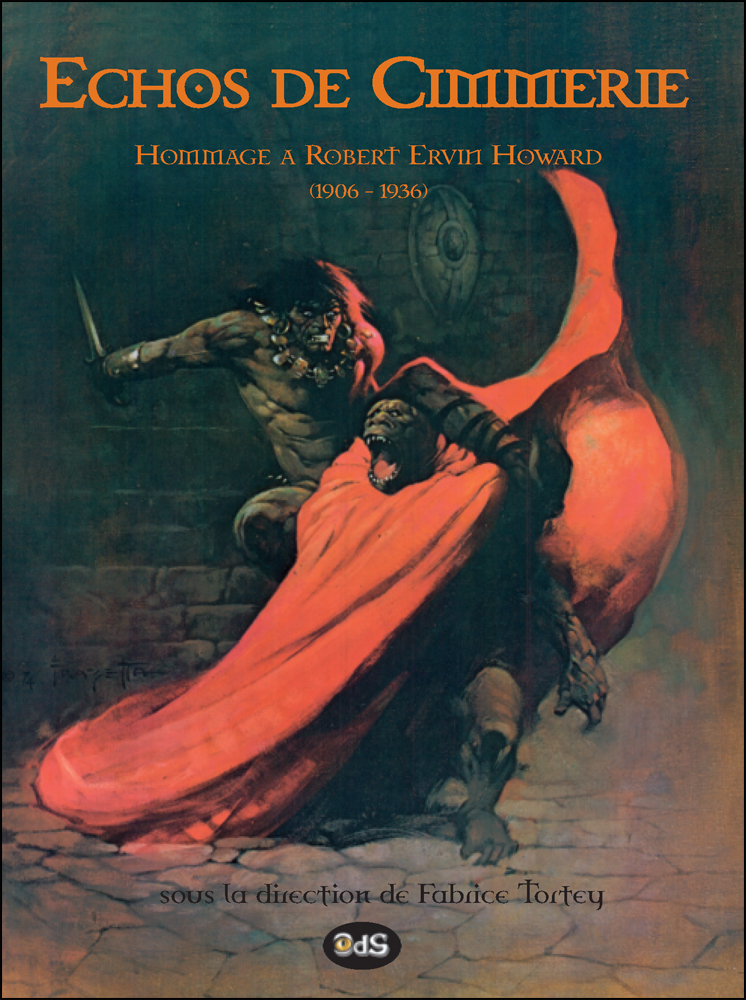 At long last, Fabrice Tortey reports that his large and meaty French tome about Robert E. Howard, Échos de Cimmérie, is at the printer and will be available shortly. It promises to be filled with interesting essays about Howard from both French and American writers. Last year Donald Sidney-Fryer read the galleys in the original French and reviewed the book in TC V5n6. I also published some of the contents of the book, translated into English, in TC V5n2.
At long last, Fabrice Tortey reports that his large and meaty French tome about Robert E. Howard, Échos de Cimmérie, is at the printer and will be available shortly. It promises to be filled with interesting essays about Howard from both French and American writers. Last year Donald Sidney-Fryer read the galleys in the original French and reviewed the book in TC V5n6. I also published some of the contents of the book, translated into English, in TC V5n2.
Information on ordering the book, and a breakdown of the contents, can be found here.
UPDATE: The book is now available at Amazon here.

Robert E. Howard fans usually have a strong opinion regarding the practices of pastiching and “posthumous collaboration”, which has been archly described as a work by two authors whose positions should be reversed.
I remember when the family of the late V.C. Andrews hired a ghostwriter, Andrew Neiderman, whose name appeared nowhere in the books, to continue her works under her name. I thought that was horribly misleading of them. You had to check inside to find it wasn’t actually her work. I thought that the Howard pastichers would have loved an arrangement like that.
But recently I saw something new in posthumous writing: Devil May Care by Sebastian Faulks writing as Ian Fleming. Now I get Stephen King writing as Richard Bachman, or Karl Wagner writing as Kent Allard, even, but “writing as Ian Fleming?” Don’t you have to be Ian Fleming to do that? I know if I ever saw a book by Leonard Carpenter or some other twerp “writing as Robert E. Howard” I’d be tempted to set fire to the things right in the bookstore. It’s amazing what’s for sale these days.
More on the book here.
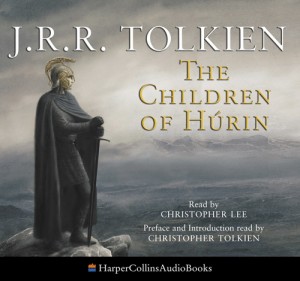 It was almost two years ago to the day that I first learned of the (then) forthcoming audiobook dedicated to The Children of Húrin. Despite the heads-up from Mr. Tompkins, it was only in the waning days of May 2009 that I finally acquired my own copy. Having some unforeseen time on my hands this last week, and an anniversary to commemorate, I sat back and gave a listen to Christopher Lee’s (and Christopher Tolkien’s) performance on the night of June 22, 2009.
It was almost two years ago to the day that I first learned of the (then) forthcoming audiobook dedicated to The Children of Húrin. Despite the heads-up from Mr. Tompkins, it was only in the waning days of May 2009 that I finally acquired my own copy. Having some unforeseen time on my hands this last week, and an anniversary to commemorate, I sat back and gave a listen to Christopher Lee’s (and Christopher Tolkien’s) performance on the night of June 22, 2009.
I purchased my copy of The Children of Húrin audiobook for twenty-five dollars and received it still in its cellophane coll, pristine as driven snow. HarperCollins cut no corners with this production. The eight compact discs are sturdily packaged in an attractive box (though, agreeing with others, I find the Alan Lee rendition of Túrin to be underwhelming). Nestled snugly within the box are two CD cases, each of which contain four compact discs. Within the first case is a booklet containing a complete table of contents pertaining to all eight discs. The booklet also presents plates by Alan Lee for the print edition. The second CD case contains an excellent reproduction of Christopher Tolkien’s map of Beleriand. The covers for both cases are derived from Alan Lee’s The Children of Húrin calendar, paintings not found in the print version. All in all, a sumptuous package. (Continue reading this post)
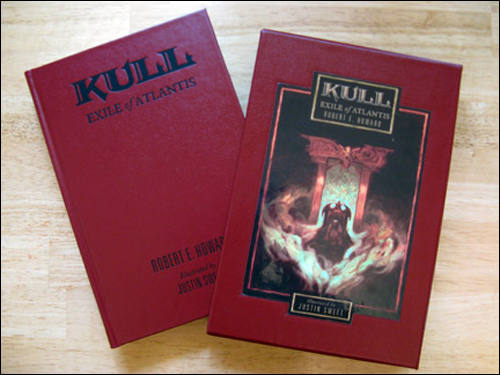
A few weeks ago Subterranean Press had a 50% off sale for some of their books on eBay, including their deluxe edition of Kull: Exile of Atlantis. That’s $75 for what’s been costing guys $150 since it was released. Ouch — I’d hate to be one of the buyers who got screwed like that. Do you think it’s possible that someday soon $75 will look too expensive for this book? Hard to be sure, but recently there was at least one auction on eBay with a starting bid of only $50. If they get down to $25 or so I might have to buy one and replace my trusty Del Rey paperback.
If there was ever a good example of why I’ve decided to destroy my back stock of Cimmerians this fall, this is it. No way do I want them washing ashore on eBay like dead fish for decades to come, saturating the market and selling for far less than what loyal subscribers paid for them, leaving my readers feeling like suckers for paying full price.I got the material out to readers, I paid the contributors — now it’s time to satisfy the collectors who supported the journal and allowed it to thrive.
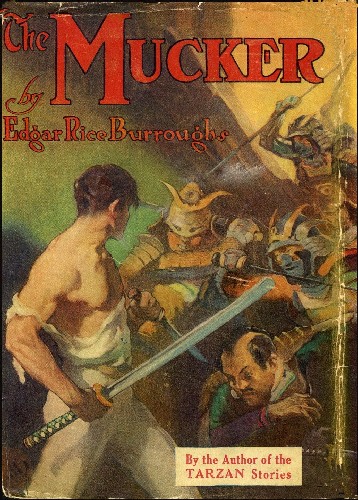
I’ve long believed that Edgar Rice Burroughs tenth novel, The Mucker, had a stronger impact on Robert E. Howard than those of Burrough’s works featuring his better-known characters. This occurred to me when I worked up a small article on the evolution of Conan’s character; how the wandering barbarian is at first a careless thief, than a mercenary soldier and pirate, and at last evolves into a responsible frontier scout, and finally a benevolent king. Burough’s Billy Byrne undergoes an even more drastic change of character though the two lengthy serials that ran in “All-Story Cavalier Weekly” in 1914 and 1916, and gathered together in book form in 1921. We do not know for sure if Howard read the magazine appearances, but the book was among those in his library, along with several other works by Burroughs.
(Continue reading this post)
“But upon all whom you love my thought shall weigh as a cloud of Doom, and it shall bring them down into darkness and despair. Wherever they go, evil shall arise. Whenever they speak, their words shall bring ill-counsel. Whatsoever they do shall turn against them. They shall die without hope, cursing both life and death.”
Morgoth’s words to Húrin, son of Galdor, upon the Haudh-en-Nirnaeth, from The Children of Húrin by J.R.R. Tolkien.
In my first post about Húrin, the greatest mortal warrior of Tolkien’s First Age, I looked at his life and deeds up to his sixtieth year. In my follow-up blog, I then summarized the events laid out in the collection of texts which JRRT seems to have intended to call “The Wanderings of Húrin.” In this post, I will trace Húrin’s journey to its bitter end. Much of this is recounted in The Silmarillion, but significant bits of the tale can only be found in The War of the Jewels: The Later Silmarillion.
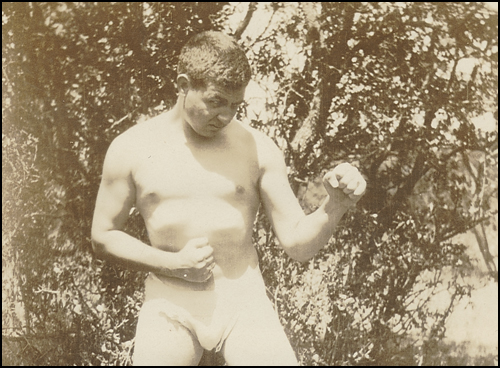
Fantasy author Charles Saunders wrote a lot of essays about REH in the Sword-and-Sorcery boom years of the 1970s, but this week on his blog he presents one that for whatever reason never made it into print at that time. It concerns a subject as dear to his heart as it was to REH’s: boxing. Titled “Ringside at Cross Plains,” it should make for a fine bit of Sunday reading for all of you Cimmerians out there.
This weekend is the 2009 Howard Days, and I wish great joy to those who can make it; we won’t be able to attend once more. But I thought some of you would be interested in the first trip I took to Cross Plains — one that could well be considered the forgotten Howard Days.
Everyone knows, pretty much, about the 1986 trip where the town was visited by Rusty Burke, Vern Clark, Bill Cavalier, Nancy Collins, Mark and Deanna Kimes, Steve Ghilardi, Tom Kovacs, and Graham Flanagan, on the fiftieth anniversary of Howard’s death. It was far from the first time people had come on that pilgrimage, as Leo wrote once, but it was probably the most significant. Eventually Project Pride, the Howard Museum, and Howard Days would all derive from this beginning — but it didn’t happen all at once.
Although I didn’t go on this first trip, I heard much about it; especially how it was impossible to really grasp the isolation of the post oaks and sand rough region without going there myself. So when the next time a trip was planned, I made sure to go. Burke was still in Houston, so that was where we met up. I flew in, only one of two times I ever flew that didn’t involve work. It was 1989 then, in November. They had just bought the Howard House, but not yet done anything with it. The group consisted of Rusty, Vern, Indy, Tim Arney, Gary Adrian, and myself. Though Glenn Lord couldn’t go to Cross Plains with us this time out, I did get to meet him in Houston for the first time, a great and funny guy. I believe we had good weather for the trip, as best I can recall, despite it being November. I can remember sitting on the Howard porch at night, and a stray cat coming up to us, whom we promptly named “Bob.”
We did all the traditional stuff, it seems: visited the house and the library, went to the Howard Paine University and the Brownwood grave, and were feasted by generous locals. As with the first trip, we got fed by Project Pride members Charles and Lou Rodenberger (a tasty chili, instead of the now standard — though wonderful — brisket on Caddo Peak). I remember they had a marvelous library, not what you’d expect from the Cross Plains area. We also met Charlotte Laughlin and her husband, who had done the heavy lifting in determining the books in Howard’s library. Perhaps most unique was a trip to the “other” Caddo Peak (East, not West), which was technically not legal, and decidedly hazardous. I still have a piece of rattlesnake skin I collected there. It was a beautiful sunset view, though, perhaps even more so than the familiar one.
Perhaps the reason this Cross Plains trip has been so overshadowed by the others is that it coincided with the 100th mailing of REHupa, which was a huge event on its own. It will always be a big event for me, however, though I have been back there a few more times, as it was my first.
“I won’t be wronged. I won’t be insulted. I won’t be laid a hand on. I don’t do these things to other people and I require the same from them.”
John Wayne in The Shootist (1976).
My general awareness of Marion Morrison, aka, “John Wayne,” started early on. My father (along with my paternal grandfather) was and is a John Wayne 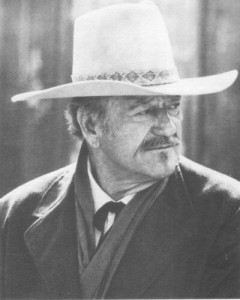 fan. I was probably viewing John Wayne flicks in the cradle. My specific knowing of whom John Wayne was, without a doubt, began when I watched a broadcast of True Grit right before I entered the double-digit stage of my lifespan.
fan. I was probably viewing John Wayne flicks in the cradle. My specific knowing of whom John Wayne was, without a doubt, began when I watched a broadcast of True Grit right before I entered the double-digit stage of my lifespan.
John Wayne, portraying Rooster Cogburn, was a dangerous man. I definitely figured that out, way back in 1976. One film critic described the Duke as embodying a spirit of “muscular Americanism.” Whether one agrees with all that implies, John Wayne most emphatically did so. Just as Conan of Cimmeria, without a doubt, personified Robert E. Howard’s vision of “muscular barbarism.”
John Wayne died thirty years ago today.
Tomorrow is the most important thing in life. Comes into us at midnight very clean. It’s perfect when it arrives and it puts itself in our hands. It hopes we’ve learnt something from yesterday.
— Inscription on John Wayne’s headstone.